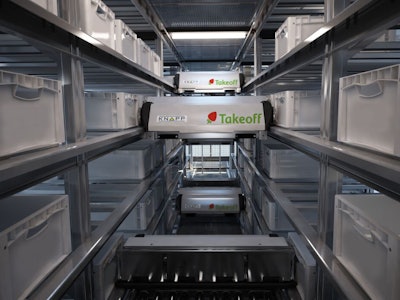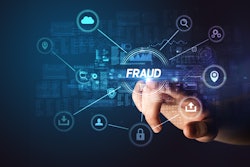
Oh, what hath a pandemic wrought? Online grocery sales this past summer increased 5-6 times over the previous year. Some experts now predict that online grocery sales will reach $250 billion by 2025. However, figures like these only tell part of the story. They gloss over the bigger picture of what the past six months mean for the future. Yes, grocery has changed, but the changes are much subtler and far more sublime than one might imagine. Online grocery delivery has undoubtedly grown in importance, but as recent research from Takeoff Technologies suggests, that importance should not be confused with what the U.S. grocery business has always been about—the relationship between price and convenience.
Online delivery is certainly one variable in this equation, but if the Coronavirus disease (COVID-19) pandemic has revealed anything, it is that the physical attributes of omnichannel grocery retailing may be just as important, if not more so, than delivery. While consumers have and will always go to great lengths to save time and money, Takeoff’s research indicates that no grocer (or retailer for that matter) should ever assume that fast delivery is all that matters.
The real road to salvation is far more nuanced and intuitive, regardless of what pandemic-laced media jargon or what outrageous venture capital-backed investments may try to fool one into believing. Here’s why:
1. Grocery shopping habits haven’t changed all that much. The most startling statistic from Takeoff’s new research report, conducted in partnership with Timothy Lasseter, professor at the Darden Business School at the University of Virginia, is that the percentage of shoppers who shopped exclusively for groceries online pre- and post-pandemic barely moved at all. In a survey of over 1,000 grocery shoppers, the percentage of primary household grocery shoppers who shopped entirely online and never went to a grocery store “only increased from 2-4%” during the pandemic. Stop and think about that for a second. During the greatest pandemic of the past 100 years and at a time when a store checkout lane has also been called the “most dangerous place in a grocery store” by CNN, only 4% of all shoppers have resigned themselves to shopping exclusively online for groceries. Or, said another way, 96% of Americans are still interacting with physical stores in some shape or fashion. But, yet, all the reports are that digital grocery commerce is exploding. How is that?
2. Curbside pickup is the real story of the pandemic. Across Takeoff’s broad survey, nearly everyone increased their online shopping frequency. Case in point: 24% of Traditionalists (aka regular store grocery shoppers) began shopping more online, while 13% of online shoppers (aka those who shopped online prior to the pandemic) also reported increased online activity.
Yet again, only 4% of the total surveyed population stayed true to the online channel, so what gives? To understand the answer to this question, Takeoff deployed a conjoint analysis to study the relative effects of price and convenience against the typical offerings of grocers over the last six months. What the research found shouldn’t be a surprise, but should still be quite sobering. Given the choice between crowdsourced delivery, free curbside pickup or still visiting a store, the overwhelming majority of the surveyed population still preferred to either shop in stores or to utilize free curbside pickup. Startlingly, among online shoppers, free curbside pickup was the preference 50% of the time, while crowdsourced delivery was only desired 17% of the time. By a similar token, Traditionalists preferred to shop in a store 54% of the time and only elected crowdsourced delivery 5% of the time. In aggregate, the conjoint revealed that, given the choices of free pickup, shopping in store or crowdsourced delivery fees, 45% of respondents (again, amid a pandemic) would prefer to shop in stores, with free pickup still being the next most desired option by a wide margin over crowdsourced delivery.
According to the conjoint study, with all things being equal, consumers actually prefer delivery to pick-up, but once the service fees or higher product price premiums of same-day delivery come into play, it becomes tough for consumers “to cover the incremental costs” relative to a curbside pickup model or just going into stores.
3. Stores will always be a part of the equation. Even amid a pandemic, the overwhelming majority of those surveyed still prefer to shop in stores or to utilize order pickup, with on average 45% of people still preferring to shop in stores. Combine these points with data from overseas markets, where online penetration has been significantly higher historically, and another important pattern emerges that gives even more credence to the conjoint statistics. For example, online shopping within the UK peaked at 49% years ago. In other words, grocery shopping isn’t just about delivery. No matter the environment, no matter the virulence, stores have always and will continue to matter. It is just that the mental exercise of what convenience means has changed. Historically, the identification of needs and the fulfilling of said needs was an exercise solely grounded in the physicality of convenience. Now it is also an exercise in speed of delivery calculated against a willingness to pay. Some will elect to fulfill via delivery, but for many, stores will still remain the inherently cheaper alternative, either to shop directly or to utilize for pickup.
So, what does it all mean? Taken together, the above assertions are important because they show that the future is as more about physical as it is digital. The pandemic has shifted shopping behavior to digital. Stores still, at the end of the day, are the most important tool grocers have in their ongoing price and convenience battles with competition. Stores are generally closer to consumers for delivery, pickup and in-store shopping, the prices of their products come with no service fees attached, and most importantly, already exist as nodes in the supply chain network to be leveraged for economies of scale. Play the game forward, and it is easy to see where the puck is headed.
The future isn’t predicated based on relying on stop gaps like pricey third-party delivery services that come into stores and pick products off grocers’ own shelves. It is instead a future about controlling one’s own destiny. It is about putting into place the flexible systems of infrastructure, like micro-fulfillment automation, checkout-free technology, curbside pickup and on-site concierge services that give consumers what they really want — flexible convenience at competitive prices — and that give grocers the return on invested capital needed in the long run. Great omnichannel retailing is the blend of smart physical, digital and human design choices. The right systems will enable it all in the moment and capitalize on existing inventory and labor without additional costs getting passed onto customers or to grocers’ bottom lines and without third-party services clogging up aisles.
Delivery is a white label service at this point. The myriad of players in the game prove that out. There’s nothing special or different about it. Everything will gravitate toward the mean over time. But, what is special and what no one can take from any grocer is what happens inside the four walls of a grocery store. That is where the real magic happens. That is where picking, packing, in-store service and more can all come together in a way that shapes an entire new expression of grocery retailing in an image that the pandemic-hardened consumer now demands and leaves behind the eventual shackles of green-vested, aisle-clogging pickers that couldn’t care less which warehouses — sorry, stores — they pick from next.




















